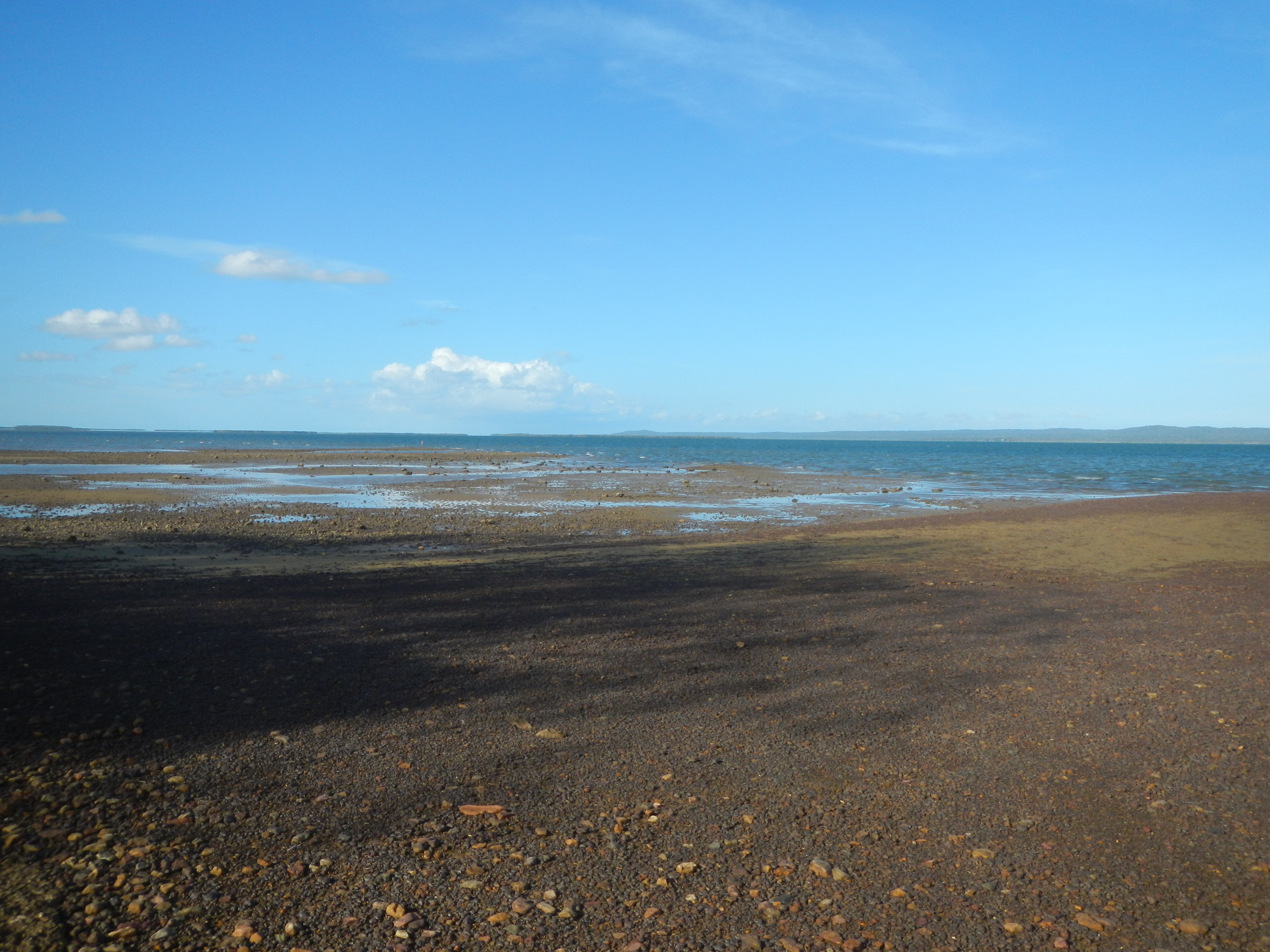|
|
Intertidal low energy over gravelShort descriptionIntertidal low energy over gravel including cobbles and pebbles. Disclaimer: Ecosystem type descriptions are based on biophysical attributes identified in Central Queensland through expert advice and supported by scientific literature. Not all ecosystem types are mapped based on current inventory, and many of the ecosystems described here may also occur in other parts of Queensland.
Classification categoriesSelect from the links below to view related ecosystem type categories Long descriptionIntertidal low to very low energy over gravel. Gravel is the collective term for unconsolidated particles between 265 and 2mm in diameter, including cobbles and pebbles, but excluding boulders in the scheme. Gravels can include mixtures of other particles, (i.e. Sediment textures of muddy gravels, sandy gravels, and muddy sandy gravel), together with those composed of carbonate e.g. coral rubble, coarse coral gravel, shells and shellgrit. Gravels can be of various Substrate compositions, such as terrigenous (i.e. fragments of decomposed rock) and carbonate (i.e. coarse shellgrits and coral rubble). Gravels of terrigenous Substrate composition have formed from past and present erosion events and soil formation processes. They can include washed out and re-worked conglomerates re-deposited by previous storm events and sea levels, or weathered geologies in situ, for example duricrust nodules of iron and aluminium oxides from Tertiary deeply weathered soils (Land zone 7). Low energy gravels accumulate finer sediment and detritus and provide a substrate for algal growth. Low energy gravels may provide habitat for encrusting molluscs (limpets), crustaceans, ascidians, macroalgae (e.g. Sargassum, Padina, Lobophora) and in clear water crustose coralline algae (CCA). In muddy gravels, algal and detrital feeding invertebrates inhabit the undersides of rock and gravel, for example gastropod molluscs (e.g. creepers or cerithiid snails, cowries), hermit crabs (and other crabs), brittlestars, and carnivorous molluscs (including whelks, cones and tritons)[1]. In muddy sandy gravels burrowing crabs may occur (e.g. the pink claw fiddler crab Uca polita, Maria Zann pers. obs.). In intertidal areas of coral rubble (and shallow subtidal) areas on the reef flats of coral reefs or rocky coral communities there is a slightly different, specialist mollusc fauna[1]. Special valuesUndersides of rubble retain moisture that provides a diverse habitat for molluscs, crustaceans and ascidians. High value molluscs prized by shell collectors can occur under rocks in low energy gravel areas. Important feeding areas for shorebirds such as oyster catchers, beach stone curlews, turnstones, with many shorebirds Environment Protection and Biodiversity Conservation Act 1999-listed species (EPBC). This ecosystem type could potentially include fish traps (see Type 24 and Additional Information). Diagnostic attributesInundation 'Intertidal – Lower low', 'Intertidal – Mid low', 'Intertidal – Upper low', 'Intertidal – Low undifferentiated', 'Intertidal – Lower medium', 'Intertidal – Upper-medium', 'Intertidal – Medium undifferentiated', 'Intertidal – High', 'Intertidal – Undifferentiated', 'Intertidal – High undifferentiated' Energy magnitude (wave) 'Low', 'Very Low' Sediment texture 'GRAVEL', 'muddy GRAVEL', 'sandy GRAVEL', 'muddy sandy GRAVEL' (note that the dominant grain size is capitalised) QualifiersCan also include modified ecosystem types such as intertidal parts of gravel roads and causeways and reclaimed areas filled with gravel, but still below the level of tidal inundation. The attributes of Substrate grain size and Inundation may be modified by fish traps. DistributionCan occur up and down the Queensland coast on gravelly geologies, including conglomerates, and as a result of riverine transport. The following relates to distribution of this ecosystem type within the Central Queensland mapping area:
CommentsOnly Energy magnitude (wave) is mapped, but Energy magnitude from other sources including currents, riverine are also applicable. Substrate composition may be relevant, as carbonate substrates such as shellgrit and coral rubble may provide substrates for the settlement of different biota and the fauna composition will differ. Additional InformationIndigenous Fish Traps and Weirs of Queensland - Rowland and Ulm 2011 References
Last updated: 12 July 2019 This page should be cited as: Department of Environment, Science and Innovation, Queensland (2019) Intertidal low energy over gravel , WetlandInfo website, accessed 25 June 2024. Available at: https://wetlandinfo.des.qld.gov.au/wetlands/ecology/aquatic-ecosystems-natural/estuarine-marine/descriptions/33/ |

 — Department of Environment, Science and Innovation
— Department of Environment, Science and Innovation


